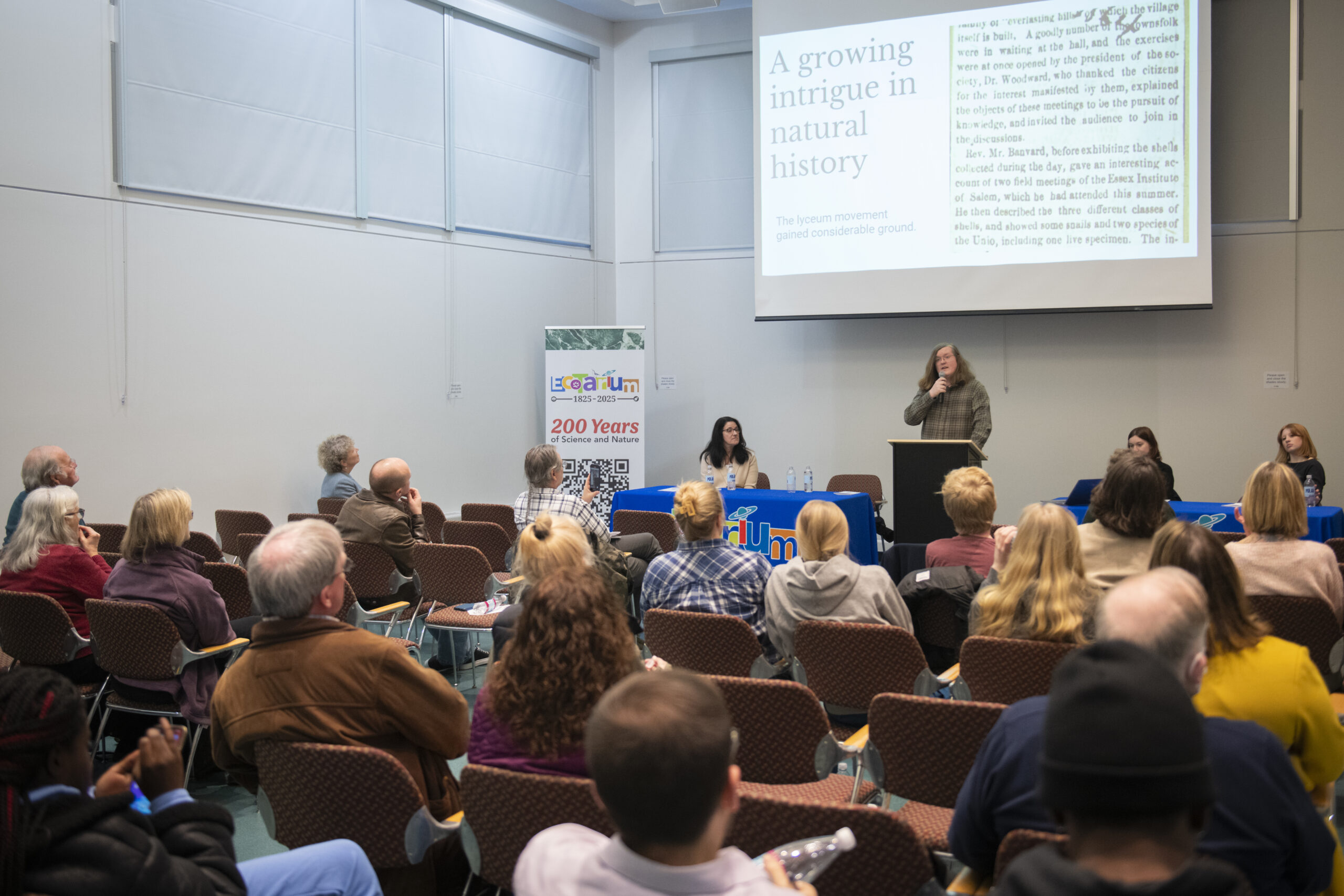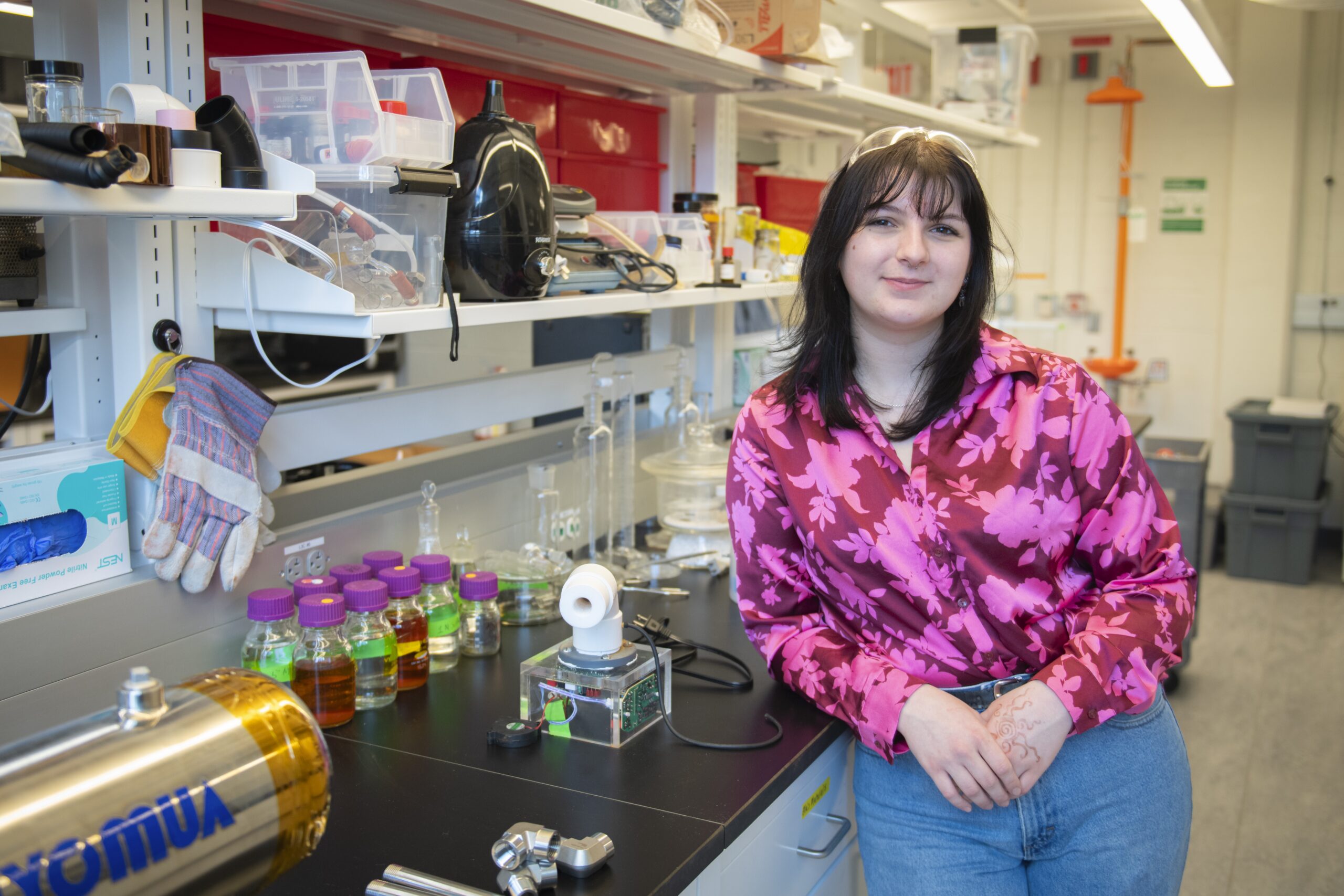Research uncovers uneasy relationship between viruses and bacteria
Biology Prof. Nathan Ahlgren conducts research on kettle ponds in Wellfleet, Mass., with Linnea Menin ’19.
Among humans, viruses have a bad rap. Given their association with especially nasty diseases, that’s perfectly understandable.
But it turns out that viruses also have a dubious reputation among bacterial residents in ocean communities. Marine-dwelling viruses are skilled at manipulating the host microbes they need to survive and reproduce.
Nathan Ahlgren, assistant professor in Clark’s Department of Biology, is a microbial ecologist who studies how interactions between viruses and microorganisms —as well as environmental factors like temperature, nutrients, and light — shape the evolution and structure of marine microbial communities.
In a Dec. 11 blog post, Ahlgren and co-author J. Cesar Ignacio-Espinoza note that viruses have been labeled the “puppet-masters of their ecosystems” and describe the relationship between viruses and their microbial hosts as a “persistent arms race.” Not only do viruses keep the populations of their hosts in check, they shuttle genes between hosts, resulting in new strains and species of microbes.
The authors say the role of viruses in microbial ecosystems is often overlooked, and cite a lack of knowledge about how natural viral communities change over time. Their new study, published in Nature Microbiology, is an effort to close that knowledge gap. Their research supports the “Red Queen theory,” which describes a cycle of “continual turnover in hosts and viruses due to the emergence of host strains resistant to infection followed by the emergence of new viral strains that can overcome the resistant hosts.”
This is not the first time Ahlgren’s research has caught the attention of the scientific community. An earlier article on the subject of viruses, published in the International Society for Microbial Ecology’s ISME Journal by Ahlgren and his team of three colleagues from USC and the University of Washington’s School of Oceanography, was one of the journal’s most cited and shared articles in 2018.
The ISME Journal article describes how Ahlgren’s team used DNA sequencing to discover 15 previously unidentified viruses that infect Thaumarchaeota, a type of archaea (a category of single-celled microbe similar to bacteria) that can comprise as much as 30 to 40 percent of the microorganisms in parts of the world’s oceans. Thaumarchaeota fill an important role by recycling nitrogen and carbon, which helps distribute nutrients throughout the marine environment.
Ahlgren says the discovery of these 15 viruses builds on similar research from the MIT lab in which he worked after completing his undergraduate degree. The MIT researchers had discovered that some viruses incorporate into their own DNA one or more genes from the bacteria they prey on, likely as a way of prolonging the bacterium’s life while it helps creates more viruses. Ahlgren had hypothesized that Thaumarchaeota are probably infected by one or more viruses and possibly harbor genes originating from their host. The new viruses were flagged because they contained the amoC gene that is central in the ability of Thaumarchaeota to recycle nitrogen.
The expression “going viral” plays off the propensity of viruses to proliferate rapidly by taking over other microbes and using them to replicate themselves. While viruses mostly play the role of predator, Ahlgren notes it is still unclear whether their interaction with Thaumarchaeota can be considered entirely negative. They probably help maintain a necessary check on the number of Thaumarchaeota in the community, he says, creating an ideal balance between predator and prey.
Clark students have the opportunity to learn DNA sequencing and other techniques that Ahlgren deploys in his work. Along with teaching a biology course with the intriguing name of Viruses: Friends or Foes, in which students explore the global impact of viruses, Ahlgren teaches The Genome Project. In this course, student research teams piece together the entire DNA blueprint of an organism with no existing reference genome, paralleling the research he learned as an undergraduate at MIT. As it turns out, the class made an exciting and surprising discovery: The bacterial culture they sequenced harbored two different viruses previously unknown to Ahlgren.
“What we originally saw as a problem with the sequencing output,” he says, “turned out to point to the presence of viruses in our DNA sample, and the students got to see this ‘problem’ unfold into a cool discovery.”





